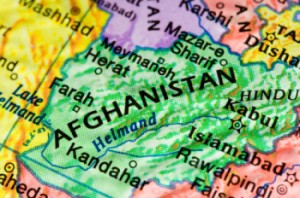Even as the Obama administration promises to end the Afghan war in 2014, their plans to shift the war from one of military occupation to one of targeted violence by CIA and Joint Special Operations forces note a continuing military presence in Afghanistan that could stretch another decade.
 Still, even the broader military’s role in Afghanistan is likely to remain past the 2014 deadline. But CIA and JSOC forces were the first to be put on the ground in Afghanistan in the weeks following the September 11th attacks, and Obama administration plans will have them be the last to leave as well.
Still, even the broader military’s role in Afghanistan is likely to remain past the 2014 deadline. But CIA and JSOC forces were the first to be put on the ground in Afghanistan in the weeks following the September 11th attacks, and Obama administration plans will have them be the last to leave as well.
In addition to these special forces continuing to conduct what are called counter-terrorism operations – but are not different from simply terror operations – US “trainers” will also remain to assist the Afghan security forces in their aims of having a monopoly of force in Afghanistan.
National Security Advisor Tom Donilon, in remarks in Washington in mid-September, said that by 2014 “the US remaining force will be basically an enduring presence force focused on counterterrorism.”
Lt. Gen. John Mulholland, a former colonel with US special operations forces told the New York Times “We’re moving toward an increased special operations role,” together with US intelligence, “whether it’s counterterrorism-centric, or counterterrorism blended with counterinsurgency.”
But these vague, technocratic iterations of US military strategy in Afghanistan will not seem different to the Afghan civilians who have borne the brunt of the military occupation and brutal war. Nor will it calm the violent insurgency which aims to oust their aggressive occupiers and has only been strengthened by the continuing foreign presence these last ten years.


